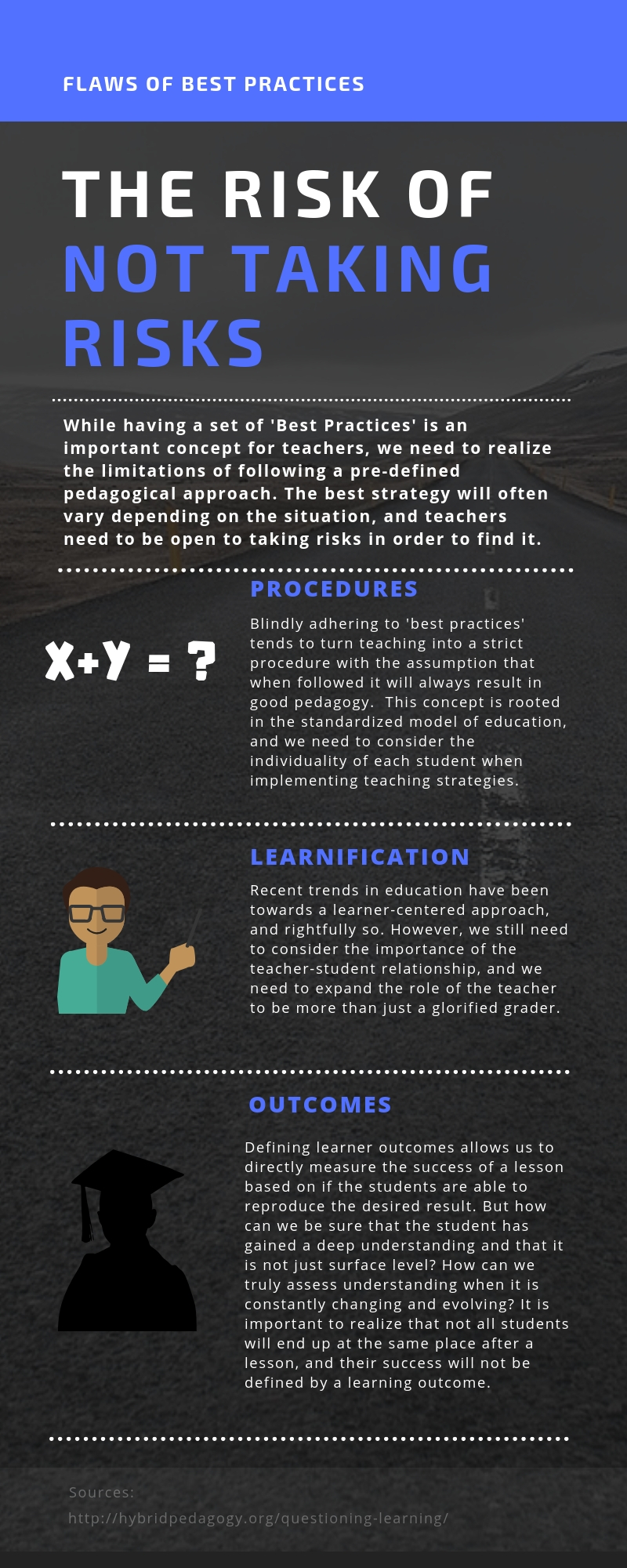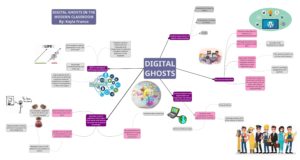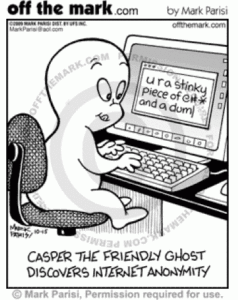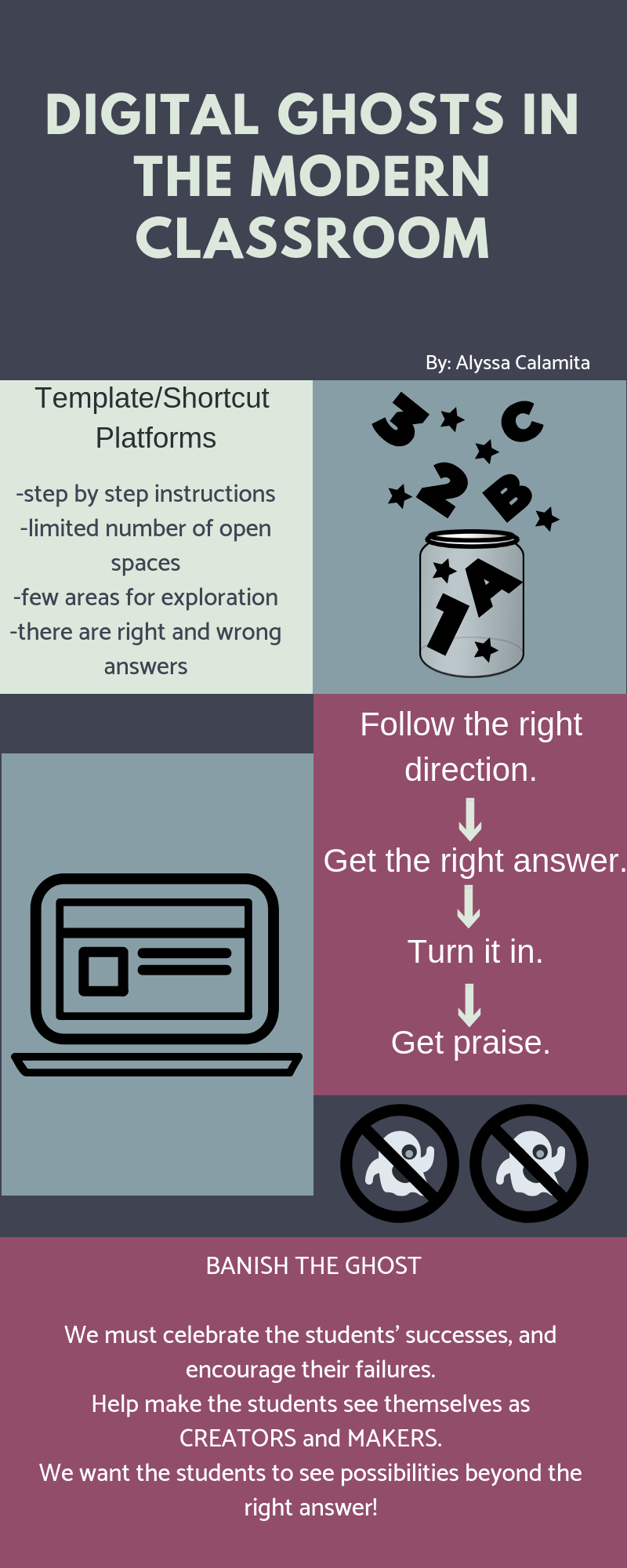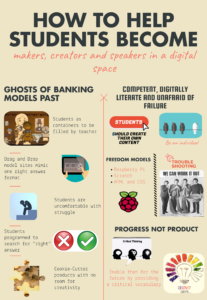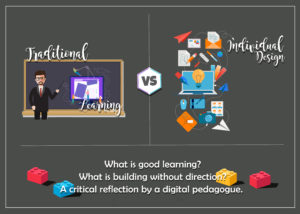
I chose to analyze and illustrate the article on Hybrid Pedagogy, Digital Ghosts in the Modern Classroom. The article starts off by explaining the common reasons for why students may take on the endeavor of learning about tech. Some of the reasons being that it is fun, interesting and that there are job prospects. From a personal perspective of both a learner of tech and future teacher of digital pedagogue, I created a poster to compare two very broad concepts of learning. The first category is an image of a teacher at the traditional starting point of learning, a blackboard. Within this blackboard there is an image of a laptop. Much like in the article there is a concept of traditional learning and teaching. Although the teacher is teaching a new subject he is still using an old teaching method of a chalkboard and self-centered teaching. If the viewer takes a closer look they are able to see that the computer screen has little avatars dropping and placing various images and texts on specific spots. This is a representation from the article of how the many of the current types of tech teaching in classrooms resembles the past ghost of fill in the blank hand out toil.
The right side of the versus contains individual design which can mean many things to different people. Perhaps the concept of dragging and dropping might be one person’s cup of tea and may be how presidential Obama marketing made their campaign, or perhaps it can also feel restrictive for those looking to make their vision come to mind. I chose this specific graphic for this side as it portrays many things spilling out of the screen without a proper place to land. This is how much of tech works as it can be messy business and will not always go as planned. There are various small icons within this graphic such as color pallets, eyedropper, camera, etc. All these images imply that there is not just one way of doing things but rather multiple mediums to the computer tech world and how we go about implementing our ideas right in the middle.
Now, what is good learning? This can vary from individual to individual. For new teachers, good learning is stepping away from standardized education as the article discusses that in previous classrooms this was the norm. The article emphasizes the need to depart from the ghosts of traditional classrooms in the digital world so students are able to experience good learning instead of traditional learning. Good learning is not perfect learning, meaning there is room for failure, success and growth.
What is building without direction? Well, with any stable project or endeavor a firm foundation is needed. This foundation can come in many forms, if it comes in the form of a template then it is based on one direction with spots to fill until the template is complete. Now when it comes to building something like a sculpture or an HTML webpage, there is no solid template, yes there is the initial blob of clay which is the foundation. There is the original HTML code that sets the framework, but the rest of the sculpture and format of the website is rightfully dependent on the maker.
Overall I agree with the article and that is why I chose to illustrate the main concepts of it in a self-made photoshop image. The fonts, colors, images have all been edited and altered by me to fit my own vision of the article Digital Ghosts in the Modern Classroom. There were a few trial and error copies that I discarded and even started from scratch at one point. I chose to create my own piece on a non-template program to further push the concept of individual design and individual learning. I am a self-taught photographer and amateur graphic designer. My experience outside of the classroom such as henna art, a photography tumblr, advertising jobs, lead me to the discovery of the tech world. Which further pushed me to learn about photoshop, lightroom and HTML through online articles and youtube videos. I believe the tech world is very much based around individual learning, individual design and individual variation, a concept of having one’s own voice and being a maker. I believe digital pedagogues must reclaim this right and allow their students to fail, succeed and fail again through inquiry-based learning in the tech world.
Yours in education,
Mrs. Ahmad

